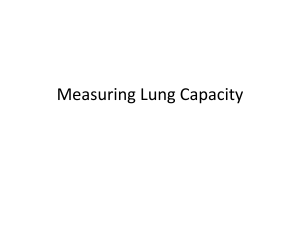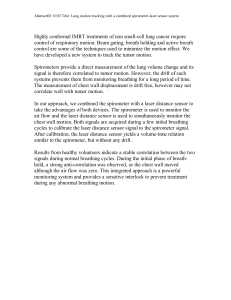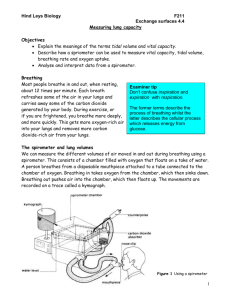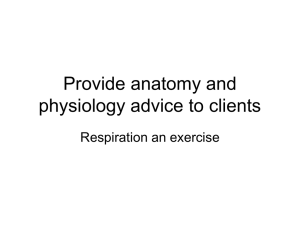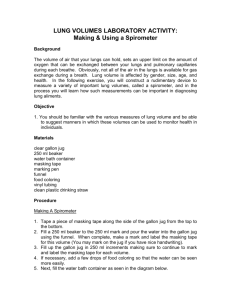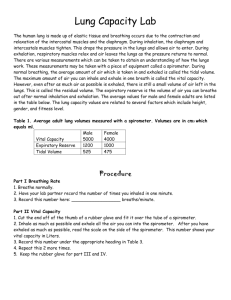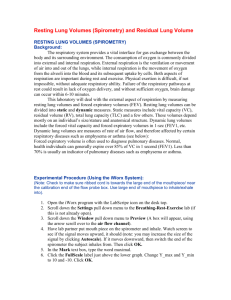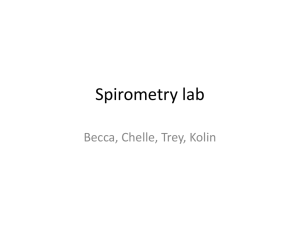Measuring lung volumes
advertisement
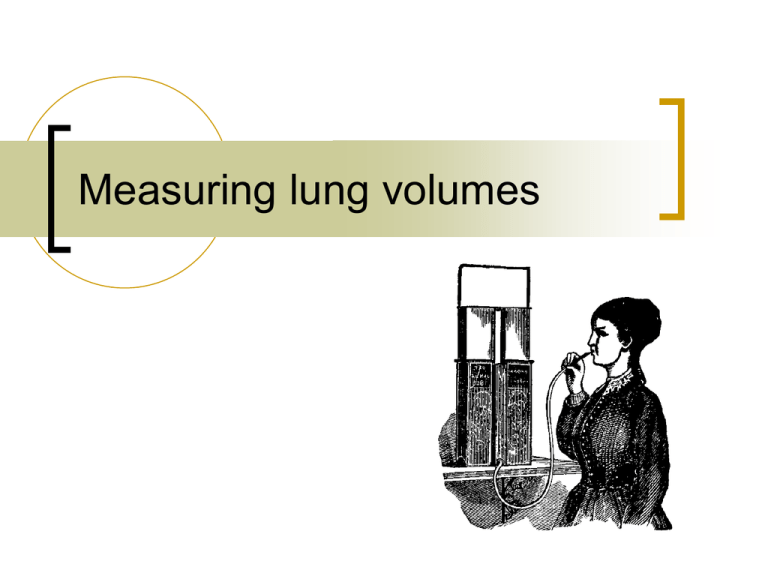
Measuring lung volumes Syllabus reference: outline the mechanism of breathing in mammals, with reference to the function of the rib cage, intercostal muscles and diaphragm explain the meanings of the terms tidal volume and vital capacity describe how a spirometer can be used to measure vital capacity, tidal volume, breathing rate and oxygen uptake analyse and interpret data from a spirometer Inspiration & expiration Inspiration & expiration Lung volumes residual volume Lung volumes The maximum volume of the lungs is about 5dm3 (5 litres) although we never completely empty the lungs; even if we breathe out as much as possible (expiratory capacity) there will still be about 1.5 dm3 left in the lung (residual volume). The amount of air breathed in and out at each breath is called the tidal volume. At rest this will be around 0.5 dm3, rising to about 2.5 dm3 when we are breathing very deeply. The maximum volume that can be exchanged by breathing in as much as possible and then forcing out as much as possible is our vital capacity. The spirometer oxygen Spirometer Lung volumes Note: compare to ‘inverted’ trace in textbook Lung volumes The spirometer oxygen Lung volumes; definitions maximum inspiration Volume in dm3 Inspiratory capacity Inspiratory reserve volume Vital capacity inspiration at rest Tidal volume expiration at rest maximum expiration Expiratory Expiratory capacity capacity Expiratory reserve volume Total lung capacity Residual Residual volume volume
